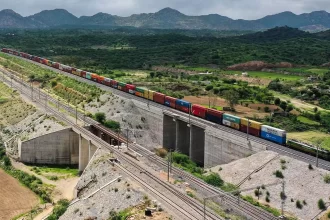In today’s fast-paced business environment, warehouse efficiency is crucial for maintaining a competitive edge. One of the biggest challenges faced by warehouse managers is managing labor costs, which can account for a significant portion of overall warehouse expenses. Within labor costs, picking labor is the most significant contributor, making it a prime target for optimization.
Warehouse pick packers are responsible for both picking and packing orders, and they can also spend a lot of time walking between the two areas. If your warehouse picking workforce is spending a significant amount of time walking up and down the aisles, it’s time to look for opportunities to optimize travel costs.
Here are some ways to optimize travel costs involved in warehouse picking operations:
Warehouse labor costs are dominated by picking, which accounts for an estimated 70% of warehouse activities. Warehouse pickers & packers spend nearly half of their time looking for items and the other half walking around the warehouse. Reducing travel time can save warehouses up to 5% of their operating costs.
Improving your storage practices (reduce the need to walk)

Zoning: Organize your inventory into fast/medium/slow moving zones. By placing the fast-moving zones closer and with easier accessibility, warehouse pickers can reduce the effort required for picking, resulting in faster and more efficient operations.
Slotting: Periodic slotting in warehouses helps reorganize inventory placements in a way that aligns with demand patterns and forecasts, ultimately reducing pick times. This practice can help warehouse managers maximize space utilization and improve order fulfillment.
Route Optimization: A good warehouse management system can significantly improve pick path efficiency. Such systems can help optimize the sequence of picking tasks, taking into account variables like proximity, demand, and inventory movement. By reducing travel times and streamlining workflows, warehouse managers can save time, improve order accuracy, and increase productivity.
Split picking tasks from material handling tasks
An effective method to optimize warehouse operations is to separate the responsibilities of warehouse pickers from those of material handlers. Warehouse pickers require higher-order skills, while material movement from one location to another can often be handled by personnel available at a lower cost.
By enabling warehouse pickers to remain within their designated zones and digitally assigning tasks to them, we can minimize unnecessary travel and physical strain. Necessary infrastructure for the picking process, such as empty bins, pallets, and boxes, can be provided to the warehouse picker within their designated zone, eliminating the need to venture outside their assigned area.
Once the warehouse picking task is completed, material handlers can take over the task of transferring goods from the pick zone to the operational area. This approach reduces travel time, enhances overall productivity, and also lowers the risk of errors in warehouse operations.
An effective way to optimize warehouse operations is to split picking tasks from material handling tasks. While picking requires higher-order skills, material movement from one location to another can often be performed by personnel who are available at a lower cost.
By allowing pickers to stay in their respective zones and directing tasks to them digitally, the need for unnecessary travel and physical exertion is minimized. Infrastructure required to perform the picking tasks, such as empty bins, pallets, and boxes, can be made available to the picker in their zone without having to move outside the zone.
After the picking task is complete, material handlers can perform the movement of goods from the pick zone to the operating area. This strategy reduces travel time and improves overall productivity while also reducing the risk of errors.
Automation
Warehouse automation stands as a pivotal means to reduce labor costs and enhance the efficiency of automated warehouse systems. Within this range, there exists a spectrum of technologies, including conveyors, automated robots, and other advanced solutions, collectively contributing to improved automated warehousing.
Nevertheless, when it comes to opting for the ideal warehouse automation solution for your needs, a correct examination of multiple factors is in order. These factors encompass the complexity of your automated warehouse systems, financial considerations, and your company’s prospective plans.
Warehouse automation companies should focus their attention on the unique nature of their automated warehousing operations and the specific requirements of their inventory when contemplating an automation solution. Additionally, they should weigh the financial investment required and the lasting impact it will have on their operations. By conducting a comprehensive assessment, warehouse automation companies can single out the warehouse automation solution that best aligns with their distinctive demands, ultimately resulting in an augmentation of their automated warehouse performance.
Benefits of Optimizing Warehousing Travel

By optimizing travel by 25%, you have the potential to achieve substantial cost savings in your warehousing operations. This can be calculated as 25% of the cost of picking labor, which accounts for 50% of total warehousing labor costs, and 40% of overall warehousing costs. This equates to a potential 5% reduction in your overall warehousing costs, which is significant. Additionally, reducing travel time for warehouse pickers pickers can have a range of benefits, including reducing fatigue, minimizing errors, and boosting employee morale.
To realize these benefits, the first step is to engage with a supply chain solution provider. They can analyze your current situation and provide recommendations for optimizing your operations. By deploying the necessary technology, you can achieve the cost savings and efficiency gains that come from reducing travel time for your warehouse pickers & packers.
Conclusion
To improve travel cost efficiency in warehouse picking and packing operations, warehouse managers can implement strategies such as zoning, slotting, route optimization, and material handling automation. These strategies can help reduce labor expenses and improve productivity for warehouse pickers and packers.
Reducing travel time for warehouse pickers also has other benefits, such as reduced fatigue, fewer errors, and improved morale. Warehouse managers can work with a supply chain solution provider to assess their operations and get personalized recommendations for improving travel cost efficiency. In summary, optimizing travel costs in warehouse picking and packing is essential for maintaining a competitive edge in today’s fast-paced business environment.







